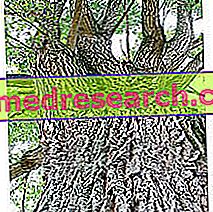Related articles: Esophageal varices
Definition
Esophageal varices are pathologically dilated veins, located immediately below the mucous layer of the distal esophagus or proximal stomach. Their onset is directly linked to a state of portal hypertension, which is found as a typical complication of severe liver disease. The esophageal varices derive, therefore, from structural failure of the cardiac and esophagus venous network, caused by a chronic increase in pressure in the portal circle (the compromised liver opposes resistance to the blood supply coming from the spleen and from the intestinal circulation) .
The pathology that most frequently causes esophageal varices is liver cirrhosis
Other causes are thrombosis (blood clots inside the vein), hepatitis, schistosomiasis and liver neoplasms.
Most common symptoms and signs *
- Catarrh
- Hematemesis
- Gastrointestinal hemorrhage
- Feces picee
- Hypovolemia
- Melena
- Blood in Saliva
Further indications
Esophageal varices can break due to the strong pressure of the blood circulating inside them and to the progressive decrease of resistance of their walls. Typically, patients have a sudden digestive bleeding, generally without any pain or other symptoms.
The massive bleeding of the varicose veins is evident for the emission of blood through vomit (hematemesis) and / or for the evacuation of black and tarry feces (melena).
In about 80% of patients, variceal bleeding stops spontaneously. Despite this, mortality is high, but is usually a consequence of severe associated hepatocellular insufficiency (eg advanced cirrhosis). Varices, both esophageal and gastric, are diagnosed with endoscopy.
The treatment consists mainly of elastic ligation by endoscopy and the simultaneous administration of octreotide (a synthetic analogue of somatostatin which increases splanchnic vascular resistance). Sometimes, to reduce the pressure and dilation of the esophageal-gastric varices, the trans-jugular positioning of a porto-systemic shunt is necessary. If left untreated, varicose veins tend to recur and can lead to further bleeding. Endoscopic and / or pharmacological therapy reduces this risk.



